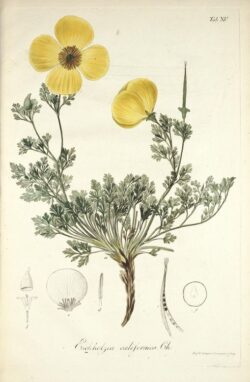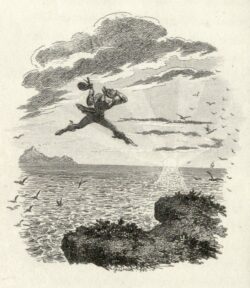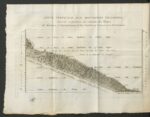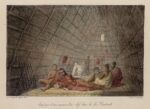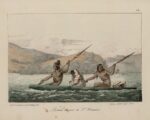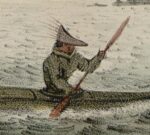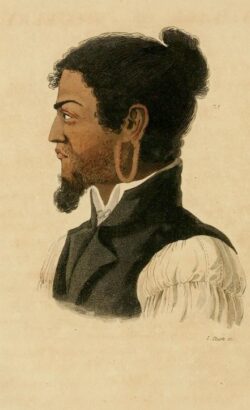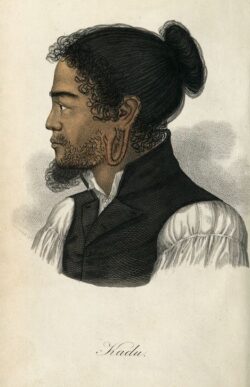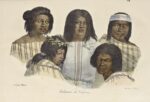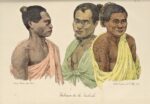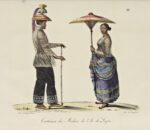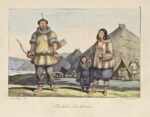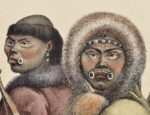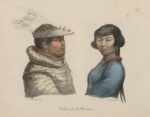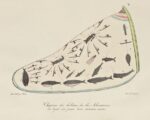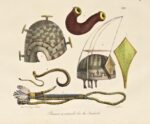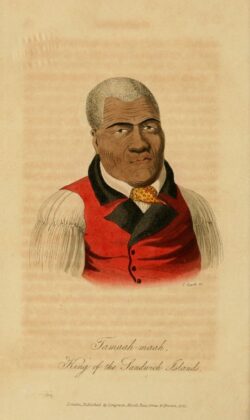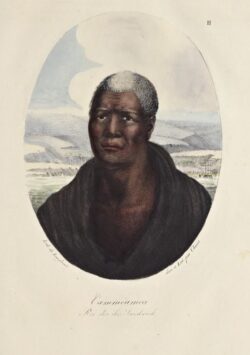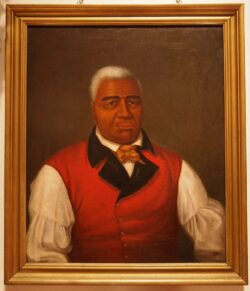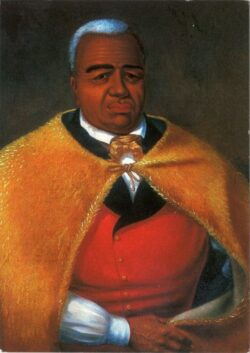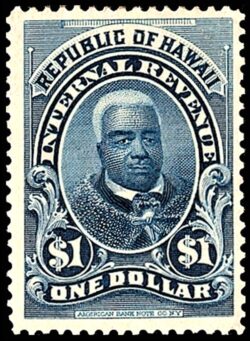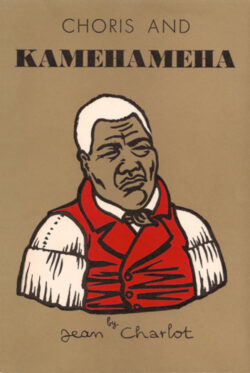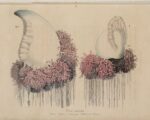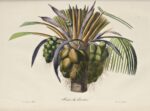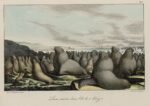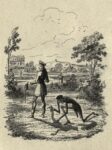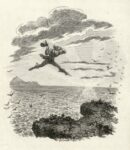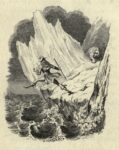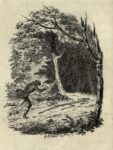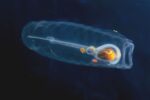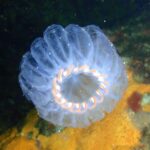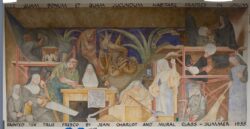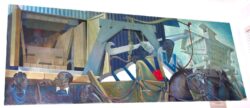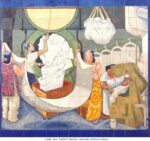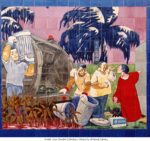French expat in Germany, Romantic poet, early anti-racist and Pacific-Arctic explorer, he wrote the first-ever book on Hawaiian grammar in 1837, figured out how coral atolls are formed, and Deforest Kelley – Star Trek’s Dr. McCoy – starred in an American TV adaptation of his magical realist novel. Adalbert von Chamisso led one of the most extraordinary lives of all time. His astonshing discoveries in ecology have never been discussed in English until now.
A digression into the history of ecology and colonialism. Usually this blog covers current environmental issues in Germany that should be of interest in any country. But recently I asked Germany’s largest conservation organization for examples of anything good the Berlin administration is doing to protect its rivers and water supply and they said there aren’t any. Hence a look back.
In 2019, when the Moet Hennessey Louis Vuitton conglomerate bought the building housing the Waikiki branch of the First Hawaiian Bank, they were intending to demolish a 100-foot-long mural in it that was painted in 1951 by a French-Mexican artist from the circle of Diego Rivera.
The mural, titled Early Cultural Exchanges Between Hawaii and the Outer World, depicted among other events another French artist in Hawaii, in 1816, painting the only existing portrait from life of King Kamehameha I, the first to unify the Hawaiian islands and Hawaii’s “national” hero.
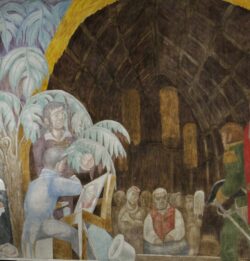
Observing this portrait session is a German-French explorer-botanist-ecologist-linguist-anthropologist-poet-children’s-book-author named Adelbert von Chamisso, born Louis Charles Adélaïde de Chamissot de Boncourt. (Chinese knock-offs of this very portrait would already be circulating in the Philippines in 1817, before the artist ever set foot there, and he bought one when the ship stopped there. The copies were circulating in U.S., which he never visited, months before thye ship returned to Europe. The mural was rescued from destruction by the State of Hawaii and is being moved to a public place at great expense.)
Chamisso led one of the most extraordinary and multifarious lives of all time. Among other things he was
1. the author of a magic realism novella in 1814 that’s been translated into dozens of languages and is among the most widely read books of all time that was originally in German
2. an important botanist who first named 1,300 species including the California poppy, which would later be designated the California state flower
3. the first to explain how humans modify the natural environment by spreading invasive plant and animal species
4. one of the pre-eminent German poets of the Romantic era
5. the first non-native speaker to write and publish in German
6. an explorer and anthropologist of the Pacific Ocean and arctic region and one of the earliest anti-racist thinkers
7. author of the first-ever grammar of the Hawaiian language and the first record of a complex numbering system used in the Mariana Islands
8. the discoverer of “alternation of generations”, a rare phenomenon where certain marine animals resemble their grandparents’ and grandchildren’s generation while appearing to be a different species from their own parents and offspring.
It’s unlikely Bill McKibben, arguably the most important contemporary American environmentalist, has ever heard of Chamisso. But in an extraordinary leap of insight such as seldom occurs in science, Chamisso published a discovery in 1827 that would later be central to McKibben’s groundbreaking and influential first book, The End of Nature, published in 1989. The discovery was that humans influence the environment in places where they haven’t ever set foot, and it still sounded revolutionary when McKibben made the argument 170 years later.
This is the first time Chamisso’s connection to the discovery has been discussed in English apart from one brief mention in 2002. He was referring to the way in which plants and animals that have been transported out of their native regions by humans – whether intentionally or not – can spread to further areas on their own, including places where humans aren’t present. The non-native species may be introduced through trade, agriculture, or other kinds of domestication, or they may be carried along unintentionally. If they’re animals they sometimes spread farther into uninhabited areas; seeds of plants can be spread by birds, animals, wind or other means. Either way, if they establish themselves in their new habitat they may significantly alter the ecosystems. (In ecologist jargon, “introduced non-native species become naturalized in areas with low anthropogenic disturbance.”)
McKibben used the same principle but in the context of the climate crisis, arguing that humans are already irreversibly altering nature and eliminating all the wilderness on earth because the human changes to the climate affect the whole planet including those places that few ever see, much less live in. The book was a major step forward in national climate awareness.
There’s no reason why McKibben should necessarily have heard of Chamisso. Only the very largest scientific discoveries are associated with the names of their originators, and anyway very few of them have been the work of one lone genius. Many advances that are commonly believed to be lightning-bolt breakthroughs have built on the work of multiple predecessors who often don’t get much recognition, although in many cases the forerunners were once well-known,
For example, not all that many ecologists know the word “ecology” was coined by the German Ernst Haeckel in 1866. Or that the famous, much-lauded diagram of plant geography that Alexander von Humboldt produced was not the first of its kind. This impressive, beautiful illustration shows how the plant species, climate, and various physical properties vary with altitude along a mountain’s slope and is considered one of the greatest achievements in information design of all time. However, few are aware that it wasn’t Humbodlt’s invention and what he did was to expand on an earlier diagram by Jean-Louis Giraud-Soulavie, as he himself acknowledged. Humboldt put more information on his but the big conceptual breakthrough was made by Giraud-Soulavie.
The almost-ecologist, but not really
Chamisso’s observation of the way humans indirectly affect the natural world was just one of several astonishingly prescient findings about the interactions among plants, animals and the environment. These discoveries too have only once been mentioned in English in connection with his name.
For example, he described how seeds have structures that encourage their spreading, such as wings or tufts for floating in the wind (think of maple seeds and dandelions); burrs for clinging to animals’ fur; or fruits that appeal to birds or animals who consume them and then excrete the seeds in a different location, where they germinate. (Some of this had appeared two times or so previously, but in obscure settings such as an article published in Swedish and never translated, and one published anonymously in a minor journal in the town of Braunschweig in 1782. Incidentally the latter is a scientific mystery. It’s far ahead of it’s time and has no detectable connection with the botanists of that era, whose careers and studies are well documented. It had been forgotten for over a century and even the botanical history expert who rediscovered it in the 1990s is baffled about who could possibly have written it.)
Chamisso described food chains in which larger predators prey on smaller animals and so on down to herbivores. Food chains, like seed dispersal, had been only briefly and simplistically described on two or three occasions. Chamisso took the idea a major step further and noted that the relationships aren’t simple top-to-bottom, big-to-little hierarchies after all, as many people still think nowadays. He saw that a web of multidirectional interdependencies is a much more accurate metaphor, because relationships such as parasites feeding on top predators – picture parasites on a wolf – don’t fit the one-way hierarchy model. Chamisso says that even though large animals do indeed prey on smaller animals,
what appears on the one hand as an “end” [he means a top predator], can on the other prove to be a “means” [the prey]. A multifarious bond of mutual need connects all creatures and the oneness of nature emerges from the profusion of its creations. The existence of each species affects the existence of many others; each is sustained by some and constrained by others, and in turn each species sustains and constrains others.
Nowadays this principle is known under various names such as the “interconnectedness of life” but it wouldn’t start catching on until a good hundred years after Chamisso, when it emerged in the field of ecology and also, separately, reached the West from eastern philosophy.
Another first from Chamisso is the notion that non-native species can spread, establish, and become a part of the local flora or fauna. This raises complex issues of determining which species are and aren’t native in a given region. When newly introduced species spread rapidly and widely, he wrote, “it can no longer be determined what was originally native and what is a non-native growing wild”. Since then, botanists have found many ways to determine which species are and aren’t native to a particular region, but even today there are cases that are still unclear despite all the power of molecular genetics.
Yet another prescient insight was in hydrology and the ecology of landscapes and soils. Chamisso noted that vegetation prevents erosion by means of its roots stabilizing the soil and trapping moisture, whose evaporation is further mitigated by the shade cast by leaves. This is been a part of many traditional farming methods worldwide for millenia in both western and non-western cultures, that is, in unwritten orally-transmitted practices. Even today though, the importance of using the land to absorb stormwater runoff is often ignored, with devastating consequences. Most so-called flash floods; the floods in 2021 that killed over 180 people in two days in a few sparsely-populated counties in Germany; the Dust Bowl of the 1930s – all of these are caused not just by storms in themselves but to a large extent by inadequate acknowledgement of what Chamisso was noticing.
All these ideas are still valid and very much in use in science, and yet it’s not likely this was set in motion by Chamisso’s breakthroughs. He never wrote about them again and it could take months of research to find out whether they were mentioned and referred to by colleagues or successors.
Instead he dedicated himself to more traditional topics in botany and zoology, namely, the identification and classification of species, that is, figuring out which species is which and how they’re related. These were far more thriving and popular fields in his day than holistic research into interacting and constantly changing systems of plants, animals, soil, climate and other factors, which would only start emerging a half century later and not really catch on until well into the twentieth century.
In fact the observations were published in an odd place, a school botany textbook called Overview of the Most Useful and Harmful Plants That Grow Or Are Raised in Northern Germany, with Views on Plant Science and the Plant Kingdom. Chamisso was commissioned by the Prussian school system to write the book and assemble dried plant specimens to accompany it. So the book has no illustrations of its 300 plant species and instead, Chamisso collected thirty specimens of each in order to make thirty sets to be given to schools. That is, he collected, pressed, dried and labeled nine thousand specimens in addition to writing an overview of plant biology, classification and what would we now call plant geography and ecology, under a tight deadline.
It was exhausting and stressful and he hated it. But he did see the value in writing a “botany for non-botanists” as he called it.
Antiracist avant la lettre
So the ecological discoveries are interesting mainly as biographical anecdotes about his keen insight and sophisticated thinking. The chief appeal of Chamisso’s story lies in his other discoveries and adventures. The most extraordinary was his three year voyage around the world which led to his remarkable friendship with a Micronesian from one of the world’s most remote islands and to his empathic, respectful views on indigenous cultures that diverged from the racism and colonialism of the time.
In 1815 he joined a Russian expedition on a ship called the Rurik that set out to find the Northwest Passage that had eluded explorers for 300 years. Its secondary goals were to explore the South Pacific and assert power, albeit informally and indirectly, in Spanish-controlled California, where Russia had been making inroads on colonization and trade.
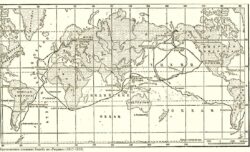
The expedition took three years and failed to find the passage, which would have cut months out of the voyage from Europe to Asia and been of immense benefit to trade. It would have allowed ships to sail from Europe, including Russia’s Baltic port of St. Petersburg, westward across the Atlantic, then west over Canada and down through the Bering Strait along Alaska to Asia. The only route at that time required sailing from southwest from Europe across the Atlantic and around the southern end of South America or, even longer, going eastward around Africa. (It wasn’t until almost a century later that the Northwest Passage was found, by Roald Amundsen in 1906. However the route never had any practical use because it was almost never passable due to Arctic pack ice, until the climate crisis melted it in 2009.)
Besides the captain, who was only twenty-seven, and Chamisso there was a zoologist, an illustrator, and twenty-eight other officers and crew. The captain was not especially interested in science, as was sometimes was the case in such expeditions. At best he grudgingly tolerated it and haggled over storage space for the dried plant specimens and zoological collections preserved in jars. At worst there was hostile conflict and he threw specimens overboard, which was not unprecedented on such voyages. This stands in contrast to the count who sponsored and financed the expedition, who did take an interest in science.
The most important part of the three-year voyage, the whole reason for going, was the two summers spent exploring the Russian and especially American coasts of the Bering Sea in search of the Northwest Passage. En route to and from there and during the winter between the two Alaska segments, when the weather was too harsh for exploring the far north, the Rurik zigzagged around Micronesia and Polynesia, including Hawaii (which geographically is part of Polynesia) and a month-long stop in San Francisco, in three stretches of about three months each. Getting to the Pacific in the first place took about nine months, going around South America, with short stops in places such as Chile and Easter Island, and getting home took the same time, going past India, with short stops in southeast Asia and Madagascar and then around Africa’s Cape of Good Hope.
Chamisso’s account of the voyage was published, rather confusingly, in two books that largely cover the same locations but more or less randomly address different aspects of them and were published fifteen years apart. The first, Remarks and Opinions of the Naturalist of the Expedition, was a volume in the expedition’s official report published three years after they returned. The second, titled A Trip Around the World with the Romanzov Expedition in the Years 1815-1818, Part 1: Diary wasn’t published until fifteen years later.
Both titles are misleading as the books consist mainly of objective accounts of the flora, fauna, geography and people they encountered. They don’t have much that we’d call either opinions or dairies with the notable exception of some observations on imperialism, the differences between European and Pacific Island cultures, and what does it mean to say that people are or aren’t “civilized.” The Diary is something of a minor classic of global explorer literature, a genre that includes a great many accounts of voyages, and although it’s not actually his diary, its tone is more personal, reflective, and readable than the Remarks and Opinions. (His original diaries were finally published in 2023). Both works range far beyond Chamisso’s official task as botanist, encompassing everything from customs and mores to basketry and weapons, language and songs.
On February 23, 1817, a Micronesian named Kadu, from the Aur atoll in the Ratak island chain, joined the expedition for the second of the two summer journeys to Alaska. Today, the total population of the atoll’s forty-two islands is about 500; the largest is less than half the size of New York’s Central Park and a mile across at its widest point. It’s part of the Republic of the Marshall Islands, which includes other atolls such as the Bikini where the U.S. forcibly evacuated the residents in order to conduct nuclear tests.
But Kadu had only been living in the Rataks for four years. Originally he came from an atoll 2,000 miles away called Woleai, and settled in Ratak after his boat was blown startlingly far off course. Woleai is the same size as Aur and today it’s one of several atolls that make up Yap State in the Federated States of Micronesia, famous for its large stone money discs which can be several feet in diameter. The Rurik’s schedule conveniently allowed for Kadu to spend six months or so on the voyage and then be dropped off at home on the way back to Europe.
Chamisso writes that neither the Europeans nor the Ratak islanders could believe Kadu was serious about joining, his compatriots trying to discourage and physically detain him, the Europeans wondering if he had some scheme in mind. They needn’t have worried.
In Kadu Chamisso found a kindred spirit, ”one of the finest characters I have met in my life, one of the people I have loved the most.” His accounts of Kadu’s time on the Rurik are an individualized expression of the empathy, respect and tolerance he showed towards the all the people encountered during the expedition. He made nonjudgmental and open-minded efforts to understand them on their own terms and his descriptions of them, their cultures, lives and societies, have considerably less condescension and more thoughtfulness than most explorers had both before and after, and some even into our own lifetimes.
Some of his observations sound astonishingly modern. He argues that the traditional societies aren’t inferior due to a lack of what westerners consider good and moral civilization, religion, and achievements, just different, nor are their cultures crude and rudimentary as bigoted colonists had thought. He noticed that many of the languages and cultures were on the brink of extinction and argued they have value and should be preserved. He was especially critical of the brutal and inhuman treatment of indigenous peoples by Spanish missionaries around San Francisco. All of this contrasts with the western colonialist views that were universal at the time and which held that indigenous people were either sub-human savages, or else noble savages living a simple, idealized life of harmony with each other and with nature.
The expedition was visually documented by its artist, Louis Choris, who was only twenty-one when the Rurik departed. It was he who painted Kamehameha I’s portrait while in Hawaii and this is the event depicted on the mural that was in the bank in Waikiki. His illustrations of people, landscapes, plants, animals and objects constitute the most important visual record ever made of the cultures of Alaska, California and the Pacific islands in the early nineteenth century. Strangely, they were nearly all published in two books by Choris himself with only a handful appearing in the actual accounts of the voyage by Chamisso and the captain.
Interestingly, Kadu has a very different expression in his portrait in the Rurik’s official report than in Chamisso’s Diary although they are clearly based on a single original sketch by Choris. In the former he has a stern, guarded and focused demeanor while in the latter he bears a calm, patient and arguably introspective mien.
The portrait session with King Kamehameha is recorded in nearly hour-by-hour descriptions of the day in diaries and the official published acounts. Two variants of the portrait are known, one with modern European dress including a scarlet vest and the other with traditional dress. Fans of old books will be interested to know they variously appeared in the numerous editions and translations as envgravings, lithographs or aquatints with subtle differences.
The version with the vest became immensely popular and has been copied many times in formats ranging from same-size facsimiles of the original small watercolor sketch made on-site, to large oil paintings and a postage stamp in the 1890s when Hawaii was a republic. In 1958 the mural’s artist, Jean Charlot, published a book detailing the history of the many versions (available free for download here).
The version with the vest is the one that already being copied by the Chinese and sold in Luzon, Philippines when the Rurik arrived there, as well as in the eastern U.S. – which was not on the Rurik’s route – before its return to Europe. One of these copies was donated to a museum in Boston, which still has it, while the Rurik was somwhere in the Pacific Ocean.
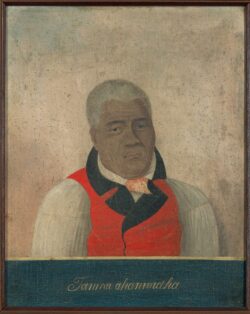
How did this happen?
Choris’ journal tells us that the portrait was so well-received in Hawaii that he made copies and left them there. At some point one of them must have ended up in the hands of American merchants and Chinese copyists, or at least a copy of a copy did, and then spread around the globe while the Rurik was still exploring Alaska and the south Pacific.
Chamisso wasn’t a complete prophet of modern social justice who would seem time-transported from our present day. There’s been a tendency for some time now to see pioneers from past centuries in a variety of fields as breathtakingly prophetic visionaries,and to make exaggerated claims about how modern and influential they were. For example there’s been a wave of gushing boosterism over the aforementioned Alexander von Humboldt in recent years, especially in Germany. At best it’s overexcited, superficial hyperbole; at worst, factually wrong. Humboldt’s been championed as “the inventor of nature”, of environmentalism, globalization, and the internet, prophet of climate change and progenitor of the Latin American independence movement. (The pinnacle was the construction, in Berlin in 2021, of an embarrassing replica of a long-demolished imperial palace that is essentially a monument to lost German empire – mainly the first, Holy Roman Empire, not the Third Reich – that was christened the Humboldt Forum in an attempt to dilute, or distract from, the imperialist, nationalist message.)
In reality Humboldt did make prodigious contributions in many fields, among them measuring and documenting plants and animals and their geographical distribution. But when we look at the earlier scientific thought that he cites in his writings it becomes clear he produced virtually no insights, theories or syntheses that were fundamentally new or changed the course of science. On a conceptual level, which is what matters for true scientific insight, most of his presumed innovations were continuations of ideas that were already in circulation, not unprecedented leaps forward.
So Chamisso’s breakthroughs ought not to be overestimated. And while his views of nonwestern cultures were often ahead of their time, he sometimes expressed the noble savage view, and at one point ranks Pacific cultures according to how praiseworthy they are, with California native peoples inferior to the others. More importantly, the anticolonialist ideas never became a major theme in his subsequent work, which focused mainly on botany and poetry, and his influence on the course of European relationships with indigenous cultures was limited.
Nor can the expedition be considered groundbreaking in terms of encountering people that had never had contact with Europeans. It produced important discoveries and documentations of nature and people but they hadn’t been entirely devoid of western contact. By the time the Rurik reached the south Pacific in 1816, Europeans had been visiting even highly remote islands for 300 years and well-traveled trade routes crisscrossed the ocean. There were translators, somehow, in places that are still very remote today. Chamisso was able to obtain German botanical science books in a town on the Kamchatka Peninsula, 1,500 miles from Vladivostok as the crow flies, that had only first been settled sixty years previously and officially declared a town just three years before the Rurik arrived. He mailed letters home from there and other improbably remote places. At a remote bay in Chile he met up with another German botanist and collected plants.
However when we say that places had been visited by Europeans, in some cases that means there had only ever been one visit for as little as a single day by Europeans in the 300 years. For some other places we know that Europeans had contact but left no substantial documentation, and so Chamisso and Choris were the first, or nearly so, to describe these places and peoples in any detail.
Either way, Chamisso’s account and later publications on the flora, fauna and languages they encountered are important and valuable records of Pacific Rim culture and history and his name is reasonably well-known in Pacific rim history circles. Two of his most notable contributions are the first-ever study of the grammar of the Hawaiian language and of a unique numbering system used in the Marshall Islands. Many plant and animal species collected by Chamisso and the zoologist, Johann Friedrich von Eschscholtz (pronounced esh-holts, rhymes with fresh bolts) were previously unknown to science. Their published descriptions and the specimens they deposited in natural history museums are still in use by botanists and zoologists.
The most famous is the California poppy, Eschscholzia californica, which would later be named the California state flower. As has always been common in botany, Chamisso named the species in honor of someone else, in this case the zoologist. He mistakenly omitted the “t” from the name and under the international naming rules it can’t be changed. Altogether he discovered 1,300 plant species in the scientific sense, which means he was the first to describe them in writing, verify they’re really a unique species of their own, give them a formal name, and deposit specimens in herbaria.
About a hundred plants have been named for Chamisso by other botanists who first identified them, in the same way he named Eschscholzia californica for his colleague, for example, Chamissoa javanica or Achyronia chamissonis. However, I find highly implausible the claim in a book on Chamisso (in German) that the various shrubs in the Americas known as chamiso, chamiza or chamise in English and Spanish are named after him, given that chamiza in Spanish has various other related meanings such as branches used for firewood. Hardly any vernacular names (plain English, as opposed to Latin) for plant species are based on individual people and they tend to be biblical or royal: Solomon’s seal, St. John’s wort, Queen Anne’s lace. I’m not seeing why South Americans would have used the name of a German botanist for their word for firewood. Further namesakes include Chamisso Island, the Chamisso Wilderness and Kotzebue Bay in Alaska.
The expedition continues to appear regularly in studies of Pacific exploration, especially the history of Russia’s participation, which was considerably more extensive than is generally known: the world’s most important collections of indigenous Californian artifacts from before the Gold Rush of 1841 are in St. Petersburg.
Peter Schlemihl’s Wonderful Story
So what about the magic realism novella? It’s called Peter Schlemihl’s Wonderful Story and it was a big hit upon publication in 1814. I’d be surprised if it wasn’t in the top ten bestsellers of all time that were originally written in German, up there with Heidi and All Quiet on the Western Front, given that it’s been translated into twenty languages, or forty (reports differ), and when you factor in its popularity for over two centuries. Just in 2018 it was translated into Arabic (by a woman, incidentally, at an Egyptian university that has separate campuses for men and women).
It’s a book-length fairy tale about a man who sells his shadow to the devil in exchange for a never-empty sack of gold. Society shuns the shadowless man, leaving him miserable, lonely and with no place where he feels at home. The riches are of no avail. Finally he abandons the gold and, coming across a pair of magic boots that allow him to cover seven miles in a single step, wanders the world. Enthralled by all there is to see and experience, he finds fulfillment in traveling and learning about places and plants and animals. The book’s happy ending is Schlemihl’s settling into a contented life as a botanist and zoologist.
Many artists have illustrated editions of Peter Schlemihl, including George Cruikshank, the nineteenth century British caricaturist and illustrator known for his illustrations of Charles Dickens’ works, and the expressionist Ernst Ludwig Kirchner. In 1953, an American television adaptation was broadcast starring Deforest Kelley, later known as Star Trek’s Dr. McCoy. A video adaptation using Playmobil figures is freely available online, in German. Schlemihl, usually spelled schlemiel in English, is the Yiddish word for a clumsy, foolish person. It’s sometimes confused with schlemazel, an unlucky person; the distinction is commonly stated as, “the schlemiel spills the soup on the schlemazel”.
The use of a Yiddish word in the title of a bestseller in 1814 may seem extraordinary. It certainly would be for a book from that time in the English-speaking world and still today it would be uncommon, although not shocking, if the book didn’t have a Jewish author or other Jewish connection. The situation is very different in German, which has a fair number of common everyday loan words from Yiddish and Hebrew, considerably more in fact than English. Unlike in English, they often don’t have any Jewish connotation and many if not most Germans don’t know they’re Yiddish. Besides schlemiel and schlamazel examples include chutzpah, meschugge, and mischpoke.
All of Peter Schlemihl’s’ story apart from the supernatural elements corresponds very closely to Chamisso’s life, including events that played out over decades after the book was written.
He was born into a minor aristocratic family in France in 1781. They fled the revolution when he was eleven and spent the next four years drifting among five cities in three countries. It was during this time his feeling of rootlessness, exclusion and not having a home arose, which would persist for twenty years, if not lifelong.
Eventually the family settled in Berlin. As a teenager he entered the military and when he was twenty he chose to stay behind while his parents and siblings returned to France subsequent to Napoleon’s rise to power, furthering the sense of rootlessness. He began writing poetry and drama in German, his second language, and translating literature from French and Spanish, and co-founded one of the era’s chief literary circles.
Chamisso would become one of the most popular poets of the Romantic era and was held in as high esteem as his contemporaries Kleist and E.T.A. Hoffmann, whom Americans mostly know as the author of the Nutcracker story that Tchaikovsky turned into a ballet. The poetry is largely considered dated today; even the catalogue of an exhibition about him in 2004 calls it “dusty”. Still, most well-read Germans at least know his name, perhaps on the level of Anglo-Americans knowing Coleridge or Sir Walter Scott, but it appears that even those who know him as a poet often have only vaguely heard of his scientific career. Today, the poetry is probably most often encountered outside of Germany through the songs of Robert Schumann, who set to music a series of poems by Chamisso entitled Frauen-Liebe und Leben (A Woman’s Love and Life).
Released from the military, unable to settle on a career, feeling rootless and despondent, he traveled around Europe, visiting various literary figures and staying with the woman of letters and intellectual Madame de Staël for a year or so. Then he returned to Berlin, began studying botany and zoology at the fairly advanced age of 31, and a year later wrote Peter Schlemihl during yet another exile of sorts, this time for his own safety due to a war between Germany and France.
The next year he was hired as botanist for the three-year Rurik expedition and shortly after his return obtained a post at the Berlin Botanical Garden. He remained there, advancing to position of superintendent, while simultaneously continuing his literary career, until an early death at age 57.
The life stories of both the fictional Peter Schlemihl and real Chamisso, then, were marked by rootlessness, social exclusion and despair, followed by world travel and encounter with unfamiliar cultures, and finally resolution in a rewarding career of research and discovery of nature.
Chamisso was the first author to write in German as a second language, which he didn’t start learning until he immigrated at age fifteen. In addition to language there were many other areas where he lived at the intersection, or clash, of different cultures. He described this in a letter to Mme. de Stäel, which in all likelihood is his most-quoted words; for example it appears on a memorial plaque in Berlin:
I am a Frenchman in Germany and a German in France, a Catholic among Protestants, a Protestant among Catholics, a philosopher among the pious and a lout among the freethinking, a man of the world among scholars and a pedant among the worldly, a Jacobin among aristocrats and a nobleman among democrats… nowhere at home, I am everywhere a stranger.
As a result, he’s viewed as a forerunner and paragon of cosmopolitan cultural acceptance and open-mindedness. His achievement is seen as a milestone in a way that might be hard to grasp in North America, where everyone except First Peoples is an immigrant or a descendant of one, and multiple disparate languages and cultures have coexisted from the beginning of colonization – English, Spanish, African, Native American, Asian, Yiddish, at one time French (still spoken in northern New England), among others; the U.S. had dozens of newspapers and even public schools that only used German until the first and possibly second World War. European countries simply never had multiculturalism on such a scale.
Germany has a Chamisso Society, a Chamisso Square in Berlin, a Chamisso Museum, and a Chamisso Prize that used to be awarded for literature written in German as a second language and was accompanied by a nicely produced and serious magazine on the topic. (It was funded by the foundation of the Bosch company of spark plugs and kitchen appliance fame and world’s largest auto parts supplier. Out of the total of seventy-seven winners, fifty were white Europeans, only four were Asian and one African. In 2017 the prize was inexplicably discontinued after some years in which the second-language requirement had been dropped in favor of a focus on any author whose work involves a “change of cultures”, in the foundation’s words, and prizes had been given to native-born and resident German writers who did not have a migration background. The list of winners was deleted from the webste although the site otherwise still exists. Eventually a small local foundation resumed the prize, but not the magazine, and retained the looser focus.)
The implausible zoological anomaly
Chamisso’s most enduring and remarkable scientific discovery is without question an extraordinary phenomenon called alternation of generations. He found it in a gelatinous, mostly clear marine animal called the salp. Distantly related to sea squirts, salps have a tubular barrel shape and range from a half-inch to several inches long.
Salps occur in two very different forms and the strange thing is that the forms alternate in the generations: one form is always the parent, and child, of the other. One form lives in dramatic linear chains of individuals that can be many yards long and gracefully, ethereally twist and undulate in the ocean (photo above and at top of page). This form is called aggregate. When an aggregate salp reproduces, its offspring live alone, not in chains, and further, these solitary salps look different enough on the individual level from the chain-living ones that scientists were long convinced they were a different species. Then when these solitary salps reproduce, their offspring have the aggregate form and the cycle repeats.
Not only that, the solitary salps reproduce asexually, which is a sort of naturally-occurring cloning (no fertilization of an egg by a sperm cell), while the aggregate generations reproduce sexually. The asexual reproduction isn’t as unusual as it sounds, incidentally. It’s seen in certain species of sharks, lizards and insects and a number of other animals and plants.
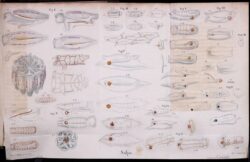
Aboard the Rurik, Chamisso kept salps in buckets, examined and sketched them, and observed them in the ocean. He was observant, patient, and most of all open-minded enough to conclude that the generations were alternating, implausible and unlikely as that was. Scientists rejected the explanation for decades, eventually realizing it was correct and later discovering the phenomenon also exists in ferns. The generation we normally think of as a fern alternates with a generation that looks like a tiny leaf lying alone on the ground, at most about an inch long. It doesn’t get any bigger or grow a stem but it really is a full-blown free-living plant whose offspring will be the form of fern as commonly understood. (Biologists will note that technically plants other than ferns have a sort of alternation of generations but it’s purely a detail of internal physiology and the so-called generations are not separate free-living plants.)
One of Chamisso’s other breakthroughs was figuring out how coral atolls are formed on the tops of undersea mountains by the accumulation of coral skeletons action of the waves. It’s a marvel that he was able to come up with the explanation given that the process ocurrs over centuries to millenia and diving suits and masks hadn’t been invented yet. (Simple diving bells did exist but the Rurik didn’t have one.) He is very rarely credited with the discovery. Other studies on the subject appeared some time after Chamisso’s, such as Charles Darwin’s well-known book on corals which came out twenty years later. I’m not sure why Chamisso isn’t credited. His theory was original but it wasn’t strange as with the salps, and it was published in widely disseminated sources.
The muralist
The life of Jean Charlot, the muralist, was as intercultural as Chamisso’s. He was an important member of the Mexican mural revival beginning in the 1920s and created murals in Mexico and throughout the U.S. from the 1920s until his death in 1979, including for the Works Progress Administration.
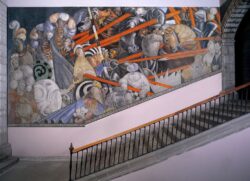
Born and raised in France, with Mexican ancestry, he moved to Mexico in 1920, where studied local history and archaeology, participated in archaeological digs, and apprenticed to Diego Rivera. Relocating to the U.S. in 1928, he later accepted an invitation from Josef and Anni Albers to teach at Black Mountain, the renowned nontraditional college that was important in the careers of luminaries such as Buckminster Fuller, Merce Cunningham, John Cage and Walter Gropius.
In 1949 he accepted a commission in Hawaii and ended up settling there, painting many murals and becoming immersed in Hawaiian history, culture and language. The Jean Charlot Foundation has extensively documented his life and work, and makes available his many books, pamphlets and articles available for free download.

Chamisso and Charlot can seem quaint nowadays, almost as starry-eyed as Disney’s It’s a Small World. We can’t know whether they’d have envisioned that chauvinism and nationalism would be increasing in 2023, or that there’d ever be such a thing as transcultural migrants bringing intolerance and religious fundamentalism into places more tolerant than the homelands they fled (to be clear, this is an issue mainly among migrants to Europe, not to the U.S.) Sadly, society has changed to the extent such that murals celebrating something as humane and just as the dignity of workers in cafeterias, public utilities, laundries and refuse collection can seem to come from another planet if you’re in the U.S.; from an obsolete, shameful and reviled Communist dystopia if you’re in Europe.


